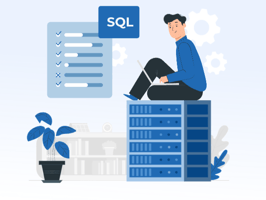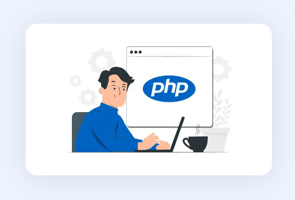Introduction In the ever-evolving landscape of technology, businesses are increasingly relying on...
Telemedicine App Development: Revolutionizing Healthcare Access in 2023 and Beyond
The field of healthcare has experienced a remarkable evolution over the past few years, primarily driven by advancements in technology. One of the most notable changes is the widespread adoption of telemedicine, which has brought about a significant shift in how healthcare services are delivered. Central to the success of telemedicine is the development of user-friendly and efficient telemedicine applications. In this article, we'll explore how telemedicine app development is revolutionizing healthcare access in 2023 and beyond.
The Telemedicine Revolution
Telemedicine, once a niche concept, has taken center stage in the healthcare industry, with the following key advantages:
-
Accessibility: Telemedicine bridges geographical gaps, providing healthcare access to individuals in remote or underserved areas.
-
Convenience: Patients can now consult with healthcare professionals from the comfort of their homes, eliminating the need for travel and reducing wait times.
-
Cost-Efficiency: Telemedicine reduces healthcare costs for both patients and providers by minimizing overhead expenses associated with physical facilities.
-
Scalability: Healthcare providers can reach a broader patient base, ensuring that medical expertise is available to those in need.
As telemedicine continues to gain momentum, the development of effective and user-friendly telemedicine applications becomes essential. Let's delve into the key considerations for successful telemedicine app development:
1. User-Centric Design
User experience is paramount. Telemedicine applications should be intuitive, easy to navigate, and accessible to individuals with varying levels of technical proficiency. Incorporating user feedback and conducting usability testing are crucial steps in creating an application that meets the diverse needs of both patients and healthcare providers.
2. Robust Data Security
Protecting patient data is a non-negotiable aspect of telemedicine app development. Implementing stringent data encryption, adhering to healthcare regulations (such as HIPAA in the United States), and conducting continuous security monitoring are fundamental components of telemedicine application development.
3. Seamless Communication
Efficient communication is the backbone of telemedicine. Applications must support various communication modes, including real-time video consultations, secure messaging, and the seamless exchange of medical records. Integration with Electronic Health Records (EHR) systems streamlines information sharing.
4. Mobile Accessibility
Given the ubiquity of smartphones, telemedicine applications must be mobile-friendly. Developing cross-platform applications that work seamlessly on both Android and iOS devices ensures a broader reach and enhanced accessibility for patients.
5. Scalability and Performance
As the user base grows, applications must be capable of scaling to meet increased demand. Regular performance testing and optimization are essential for maintaining a seamless user experience.
6. Compliance and Regulations
Staying compliant with healthcare regulations and standards is of utmost importance. Collaboration with legal and compliance experts ensures that telemedicine applications align with all relevant laws and guidelines.
7. Continuous Improvement
The telemedicine landscape is dynamic, with new technologies and trends emerging regularly. To remain competitive, developers must continuously enhance their applications through regular updates, bug fixes, and feature additions based on user feedback.
The Future of Telemedicine App Development
As we move forward into 2023 and beyond, telemedicine is poised to bring even more significant changes to healthcare access. Emerging trends include the integration of artificial intelligence (AI) for diagnosis and treatment recommendations, the utilization of wearables and remote monitoring for continuous patient care, and the expansion of telehealth services to encompass mental health support.
In conclusion, telemedicine application development is at the forefront of revolutionizing healthcare access. By prioritizing user experience, data security, seamless communication, mobile accessibility, scalability, compliance, and continuous improvement, developers can create applications that adapt to the ever-changing healthcare landscape.
In a world where healthcare accessibility is of paramount importance, telemedicine applications are paving the way for a healthier, more connected future. Embracing these best practices ensures that telemedicine continues to lead the charge in accessible and efficient healthcare delivery. The future of healthcare is here, and telemedicine applications are at the forefront of this transformative journey.


